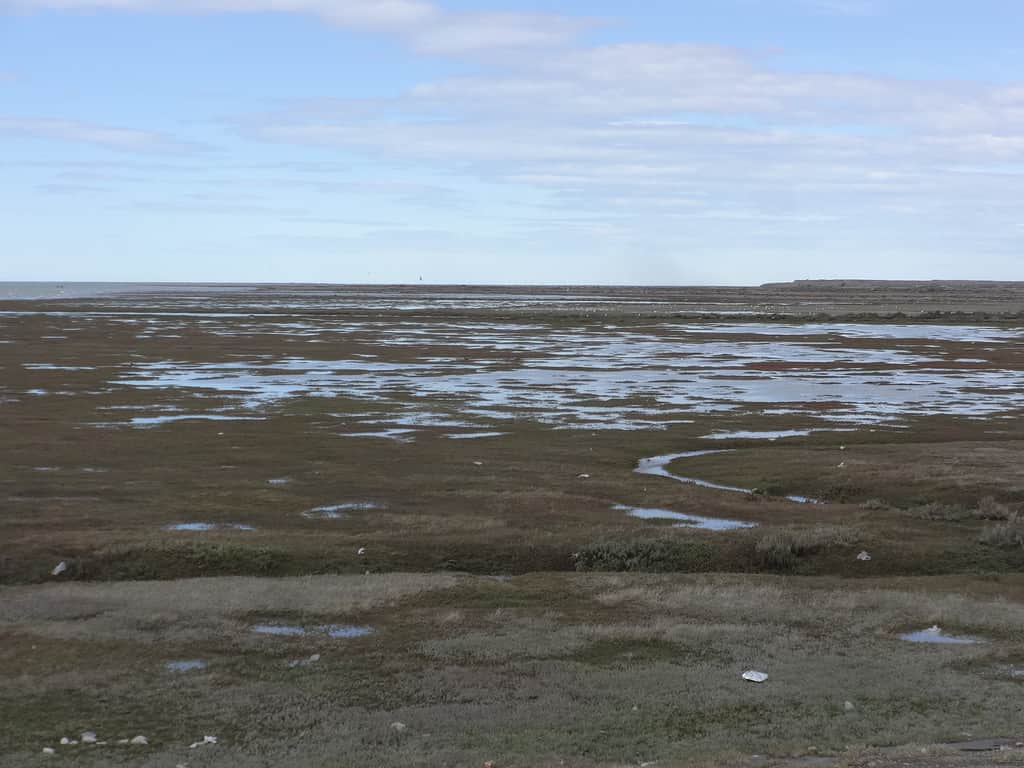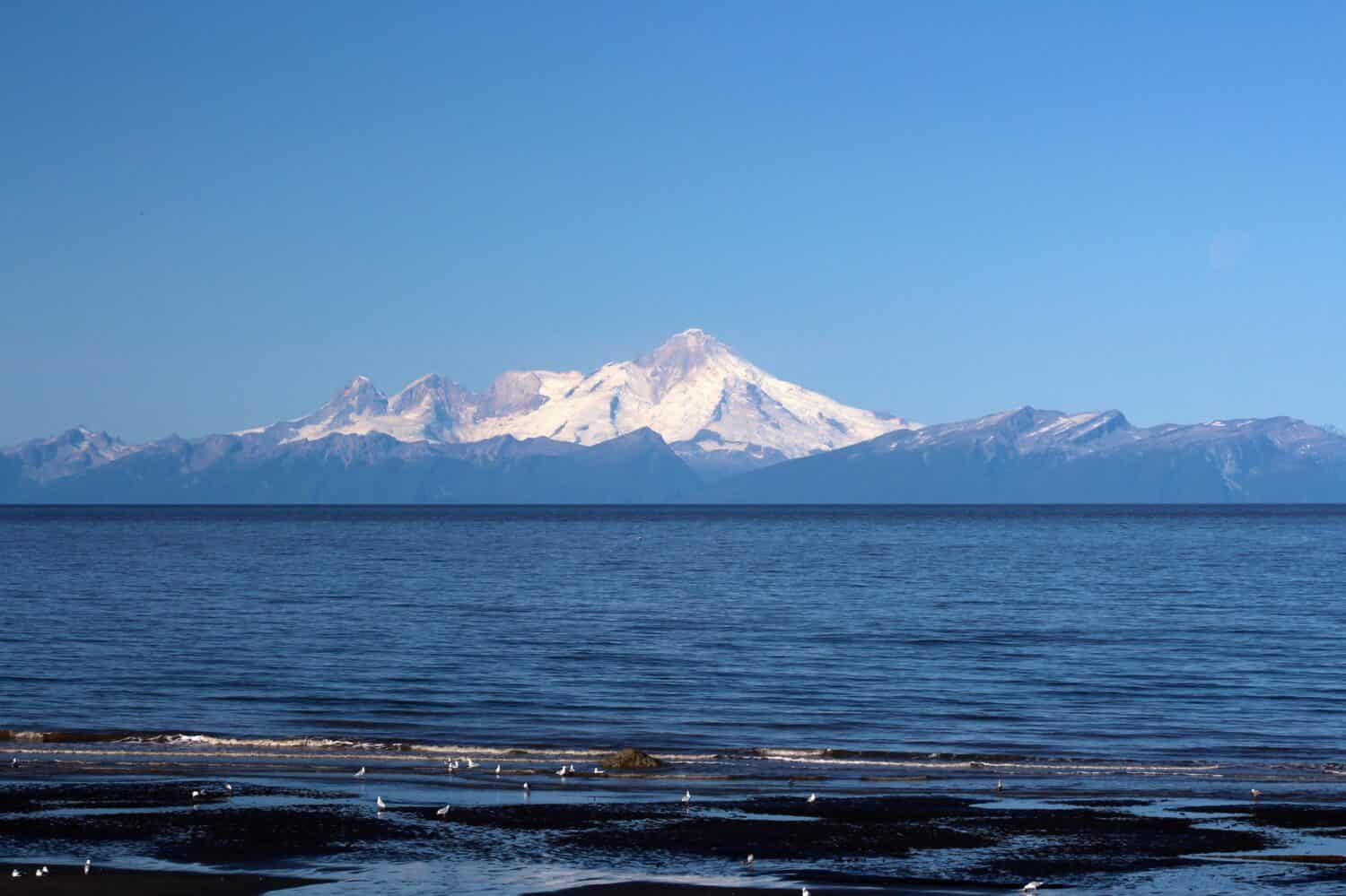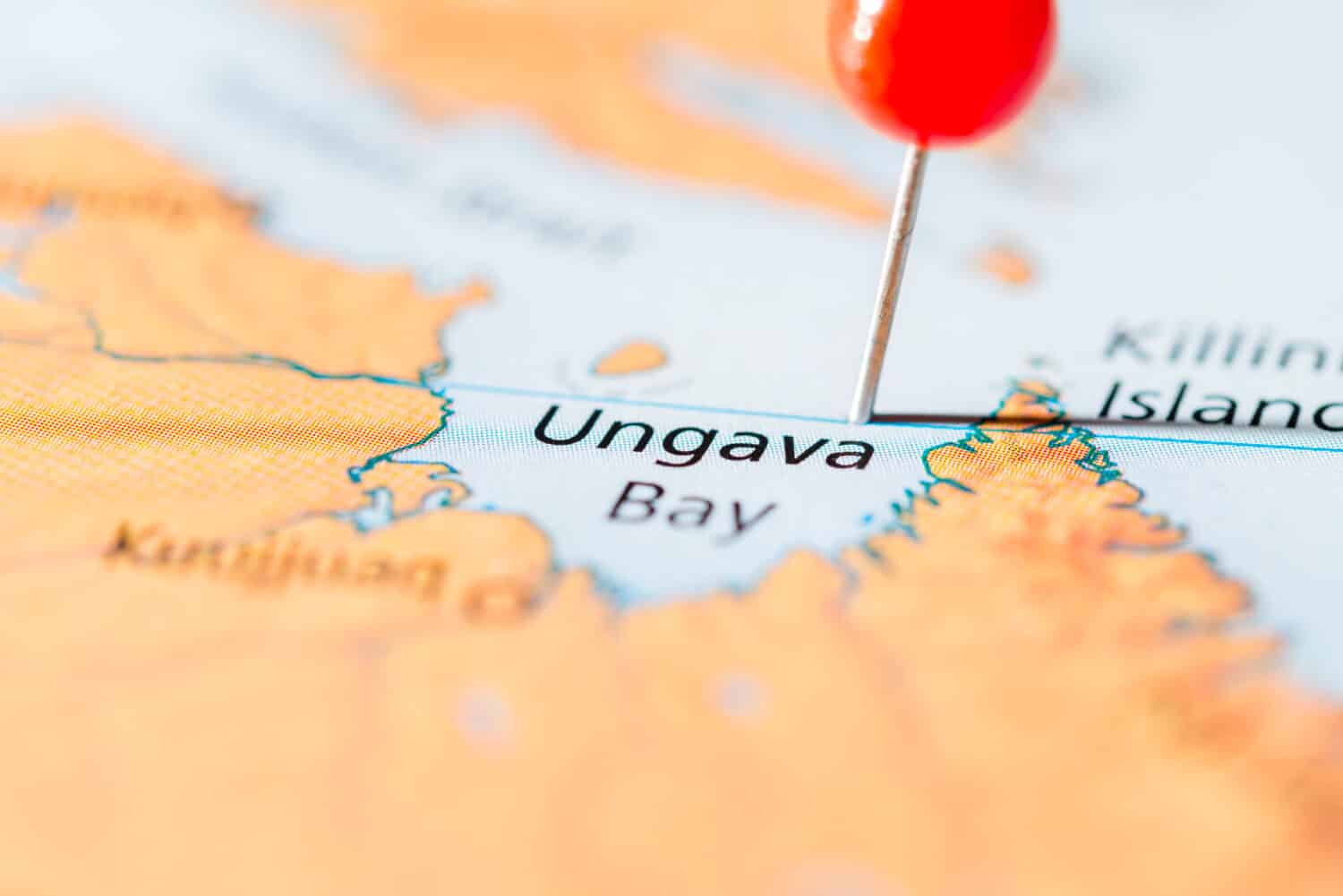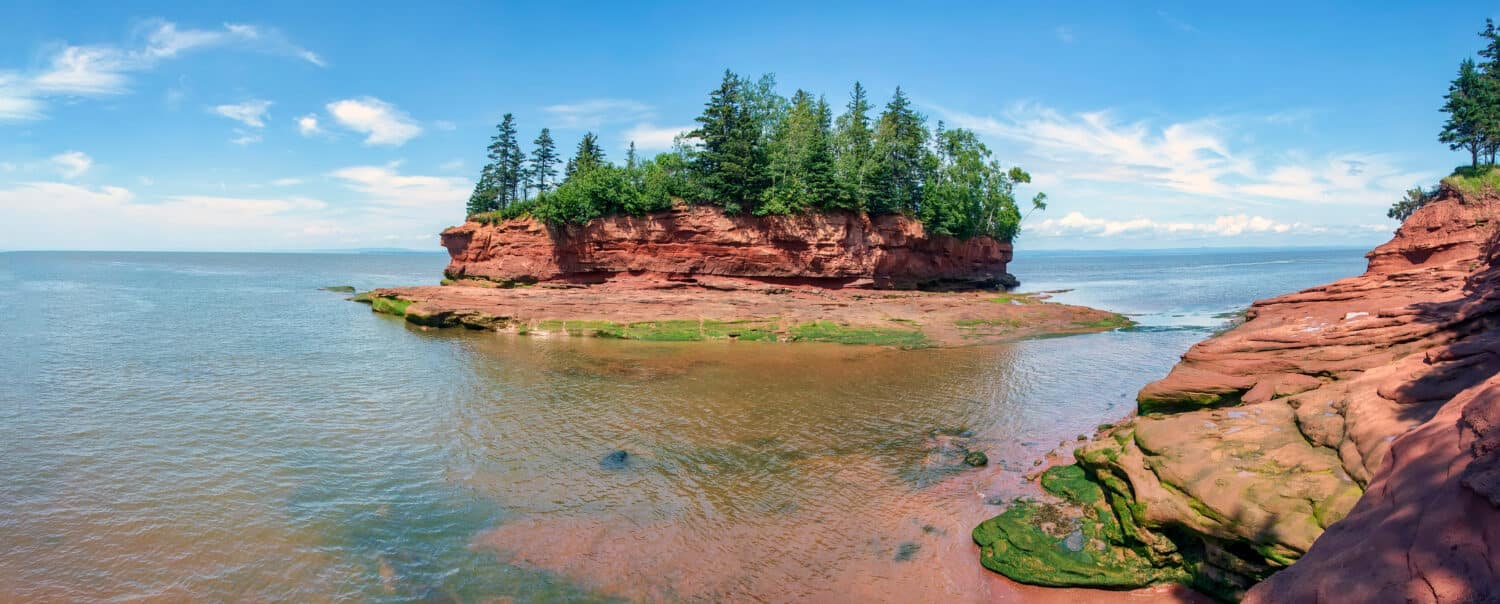Tides rise and fall around the world due to gravitational forces from the Moon and Sun. Other factors contribute to the size of tides, including geography and weather. Tides fluctuate throughout the day and season and can also be influenced by long-term changes such as rising sea levels. In certain areas, local geography creates conditions for extremely high tides. That said, where can you find the highest tides in the world? Keep reading to learn about 5 places with the world’s highest tides!

5. Rio Gallegos, Argentina

Rio Gallegos witnesses the highest tides in the Southern Hemisphere.
©iStock.com/mclaudiabr22
The Gallegos River, or Rio Galleos, is a river that runs through the province of Santa Cruz in southern Argentina. The river originates somewhere in southern Chile and flows northward until it empties into the western Atlantic Ocean.
Rio Gallegos records the highest mean tidal range of any spot in the Southern Hemisphere. It features a mean tidal high of 8.8 meters or 29 feet.
The unique geography and topography of the mouth of Rio Gallegos contribute to the high tides in the region. As the Atlantic Ocean flows westward, it slams into the coasts of Argentina. Near the mouth of the Rio Gallegos, the land funnels sharply inward, creating a chokepoint. The ocean water flowing westward meets the river water flowing eastward. Once these two waterways meet, the waters mix and create abnormally high tides.
4. Cook Inlet, United States

Cook Inlet experiences the highest tides of any spot in the United States.
©jet 67/Shutterstock.com
Located in south-central Alaska, Cook Inlet runs 180 miles from Anchorage to the Gulf of Alaska. Several water sources flow into the inlet, including the Knik, Little Susitna, Susitna, and Matanuska Rivers.
The Cook Inlet experiences the highest tides of anywhere in the United States. Specifically, Turnagain Arm, just south of Anchorage, records the highest tidal range within Cook Inlet. It boasts a mean tidal height of 30.3 feet or 9.2 meters. Meanwhile, other spots in Cook Inlet frequently record tides in excess of 25 feet.
Turnagain Arm’s natural resonance coincides with incoming tides that funnel into the inlet from the Gulf of Alaska. As a result, the swirling motion of the water currents creates a sloshing effect that leads to high tides. Additionally, the area encompassing Cook Inlet contains several active volcanoes. These volcanoes create a significant amount of tectonic activity, which in the past has created tsunamis and earthquakes.
3. Bristol Channel, UK

A shallow continental shelf just outside the channel helps to funnel water into the Bristol Channel.
©Richard Whitcombe/Shutterstock.com
The Bristol Channel is situated near the southern end of the island of Great Britain. The channel separates South Wales from South West England. It runs from the mouth of the River Severn west to the North Atlantic Ocean. The channel gets its name from the city of Bristol, a large port city on the channel’s southeastern shore.
Bristol Channel experiences both extreme low and high tides. During low tides, many parts of the channel turn into mud flats. Meanwhile, the spot with the highest tides in the channel, the Port of Avonmouth, witnesses a mean high tide of 31.5 feet, or 9.6 meters.
Bristol Channel experiences high extreme tides due to the presence of a shallow continental shelf just outside of the channel. This shelf funnels the Atlantic Ocean into the channel, leading to large ocean swells. The strong waters in the channel make it a difficult body of water to navigate. Surfing, windsurfing, and sailing all rank as popular watersports in the channel, thanks to its unique surf.
2. Ungava Bay, Canada

Ungava Bay boasts the second-highest tidal range in the world.
©Tudoran Andrei/Shutterstock.com
In northeastern Canada, you can find Ungava Bay, a body of water that separates northern Quebec from Baffin Island. This relatively shallow marginal sea of the Arctic Ocean was likely made when a meteor crashed into the Earth an unknown number of years ago.
Ungava Bay ranks as the spot with the second-highest tidal range in the world. The bay has an average tidal height of 32 feet or 9.8 meters. Moreover, evidence suggests that tides can reach nearly 56 feet near the mouth of the Leaf River during spring.
The climate of Ungava Bay is harsh. Ice covers the bay for most of the year, as temperatures in summer average around 45 degrees Fahrenheit. The bay’s shallow depth, geography, and natural resonance all combine to create the high tides for which the bay is known.
1. Bay of Fundy, Canada

Burntcoat Head in the Bay of Fundy experiences the highest tides in the world.
©Bill Kennedy/Shutterstock.com
You can find the Bay of Fundy between New Brunswick and Nova Scotia in Canada. This small island counts as an arm of the Gulf of Maine and opens into the Atlantic Ocean.
The Bay of Fundy witnesses the highest tidal range in the world. On average, tidal heights in the bay reach 11.7 meters or 38.4 feet.
The Bay of Fundy’s funnel-like shape and natural resonance creates the perfect conditions for high tides. Hundreds of billions of tons flow into and out of the bay every day. These forces also flow water upstream into several of the rivers that feed into the bay.
What Causes High Tides?
Due to the rotation of the Earth, nearly all coastal areas experience two high tides and two low tides every 24 hours and 50 minutes. This 24-hour and 50-minute cycle is referred to as a lunar day. High tides happen 12 hours and 25 minutes apart, as do low tides. It takes around 6 hours and 12.5 minutes for the tide to switch from high to low or vice versa.
High tides occur when the Moon lies directly above a particular spot on the Earth. This causes a gravitational bulge that causes water levels to rise. This bulge also exists when that same spot is again lined up with the Moon but on the opposite side of the earth (exactly 12 hours, 25 minutes later).
In certain cases, local geography and topography can contribute to larger high tides. The shape of the ocean floor and the shape of the land near the surface create a natural funnel. This funnel concentrates tidal activity, creating areas with high mean tidal levels.
How Are Tides Measured?
Prior to the advent of computers, researchers used to measure tides using tide houses. These permanent structures consisted of both internal and external features. The outside of the structure consisted of a tidal staff, while inside the mechanism, you could find a well and pen-and-ink analog recorder.
Today, most tide stations use electronic gauges or acoustic-sounding tubes to measure tides. Newer stations can not only measure tidal height but also other oceanographic variables, such as wind and water direction, temperature, and barometric pressure. The stations collect and then broadcast data periodically to databases that store tide data.
Largest Recorded Tide in History
Burntcoat Head in Hants County, Nova Scotia, lies at the far eastern end of the Bay of Fundy. The small, unincorporated community holds the record for the highest tide ever recorded.
Back in October 1869, the Saxby Gale struck eastern Canada’s Bay of Fundy region. This tropical cyclone caused ocean levels to swell and created a 6.5-foot storm surge. In combination with high spring tides, the storm led to a tidal high of 70.9 feet.
Summary of The 5 Highest Tides in The World
| Rank | Location | Tide Height |
|---|---|---|
| 1 | Bay of Fundy, Canada | 38.4 feet |
| 2 | Ungava Bay, Canada | 32 feet |
| 3 | Bristol Channel, UK | 31.5 feet |
| 4 | Cook Inlet, United States | 30.3 feet |
| 5 | Rio Gallegos, Argentina | 29 feet |
The photo featured at the top of this post is © Alagz/Shutterstock.com
Thank you for reading! Have some feedback for us? Contact the AZ Animals editorial team.






